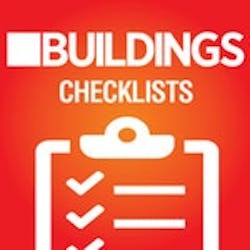Maintenance Outperforms Wall Street by 10 Times
Over the past few decades I (Eric Woodroof) have published several articles about energy savings opportunities via “maintenance.” In reflection, I don’t believe that I sufficiently emphasized the return on investment (ROI) of these opportunities.
As verified by nearly 40 years of Industrial Assessment Center energy audits in over 15,000 different manufacturing plants, maintenance-related energy saving ideas usually have the quickest paybacks, mostly because the capital investment is minimal to “maintain” a system you already have.
In early 2018, I published an article comparing the financial benefits of placing one dollar in the stock market (Dow Jones Index) for 10 years vs. putting one dollar in a typical energy management project. The energy project was far less risky and produced more than double the ROI of the stock-based investment. The energy investment also beat the stock investment performance in 8 out of 10 years.
But it is important to note that in last year’s article, my analysis only claimed the energy project had a 20 percent ROI per year. However, the maintenance-related projects within this article will almost always have over a 100% return on investment per year, so these ideas are roughly 5 times better than the analysis I did last year – meaning that they’re more than 10 times better than Wall Street’s performance.
BUILDINGS Checklist
Preventive Maintenance
Preserve the integrity of your roofing, lighting, HVAC and plumbing with our preventive checklist. Get yours now >>
So if you’re going to prioritize investments and energy, think about maintenance. In tough times, maintenance budgets are typically cut first, but doing so is actually a huge mistake when you consider the return on investment. The tables below show the math behind the results. Feel free to use and don’t hesitate to let me know if this information helps you.
Useful Tables
To give some examples, fixing compressed air and/or steam leaks have ROIs typically over 200%. Regarding these two areas, I would like to present the tables below, which are quick ways to estimate the rough magnitude of maintenance-related savings potential while you’re doing an energy survey.
These tables can be used in Imperial (US) or System International (SI) units and all tables assume 8,760 hours of operation in one year. If you only use a steam system for part of a year, just pro-rate the savings.
Compressed Air Leaks (Imperial and SI Units)
A 3 mm hole in your 7 bar (102 psig) compressed air line is wasting approximately 18,200 kWh/year. At 10 cents per kWh, this one leak is costing you about $1,820 per year!
Steam Leaks
Imagine that you found a 1/4-inch malfunctioning steam trap in your 150 psig steam line for a manufacturing process that operates all year long. You are wasting approximately 1,811 MMBtu/year at the leak, but when you consider that you have to make up this loss through the 80 percent efficient boiler, the fuel cost is approximately (1,811/.8), which equals 2,263.75 MMBtu/year. At $5 per MMBtu, this one leak is costing you about $11,318.75 per year.
[On topic: Are Energy-Saving VRF Systems Worth the Money?]
It is important to note that when using the steam-related tables within this article, the energy lost is downstream from the boiler, so to make up that energy, the fuel savings are even higher (because boilers are not 100 percent efficient). Therefore, to calculate the fuel savings (what you actually pay for), remember to divide the losses you find in the tables by the efficiency of the boiler (or heating system).
Imperial Units
SI Units
Data Derived from US Department of Energy, Better Plants Program, “Steam System Cheat Sheet”; and the Advanced Manufacturing Office, Steam Tip Sheet #1, January 2012; and Harrell, G. (2001) & ORNL, "Steam System Survey Guide" ORNL/TM-2001/263 (with a Cv=.58); Raw Data was converted into MMBTU (or GJ) losses per year (so that if fuel prices change, this chart can still be useful).
In addition, a third set of tables below shows the savings from insulating steam lines. Insulating lines greater than 300oF usually has a quick payback as well (~100% ROI). Note that you can find additional values (for different pipe diameters, temperatures, etc.) via dynamic online tools such as this one from the Whole Building Design Guide.
Thermal Loss Tables
In this example, you find a 100-foot section of bare 4-inch-diameter pipe with no insulation that contains 15 psig steam. It operates all year long. You are wasting approximately 415 MMBtu/year radiating away from the pipe, but when you consider that you have to make up this loss through the 80 percent efficient boiler, the fuel cost is approximately (415/.8) which equals 518 MMBtu/year. At $5 per MMBtu, this one leak is costing you about $2,593 per year.
Imperial Units
SI Units
US Department of Energy, Advanced Manufacturing Office, Steam Tip Sheet #2, January 2012. Based on horizontal steel pipe, no wind and 75 degrees F ambient air.
His clients include government agencies, airports, utilities, cities, universities and foreign governments. Private clients include IBM, Pepsi, GM, Verizon, Hertz, Visteon, JP Morgan-Chase, and Lockheed Martin. In August 2014, he was named to the Association of Energy Engineers (AEE) Energy Managers Hall of Fame.
Two handpicked articles to read next:

